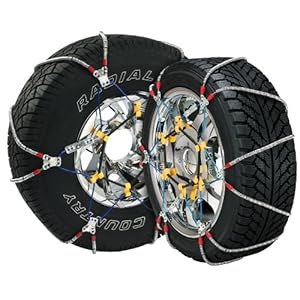Types of Tire Chains
Certain parts of America experience cold and harsh winter seasons every year. Heavy Snowfall for a large part of the year and extreme drop in temperatures certainly makes it difficult for vehicles to ply on the road. This problem has been overcome with use of Tire chains. Need for Tire chains has increased over a period of time that has led to developMent of different types of Tire chains.
Types of Tire Chains

Types of Tire Chains
Types of Tire Chains
Types of Tire Chains
A tire chain is a device that was developed to enhance traction during heavy Snowfall and icy conditions on roads. It is simply a chain attached to the front and rear wheels of vehicles to increase its traction and facilitate moveMent in heavy Snow or ice. Use of tire chains is very common not only in regions of heavy snowfall but mountainous regions too. Some specific states recomMend the mandatory use of tire chains during winter season on certain roads to avoid traffic jams and other related accidents.
There are mainly three types of tire chains such as diamond tire chains, cable tire chains, and link tire chains. Diamond tire chains get their name from the distinctive diamond pattern of its interlocking metal strands.
Cable tire chains have metal strands, which run horizontally against the face of the tire in straight strips. As they resemble cables running parallel to each other, they are called cable tire chains. Link tire chains are a combination of the pattern used to manufacture diamond and cable tire chains. They have a chain link lattice running horizontally against the face of the tire.
All three of them are very effective for driving during winter season and are ideal for avoiding road accidents and breakdowns.
Types of Tire Chains